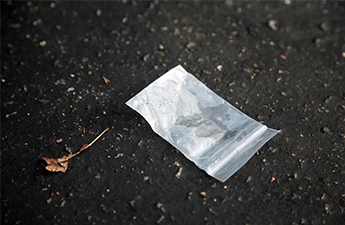- Chasing Experiences
- Prevalence of Meth Addiction
- Why Do People Keep Using Meth Despite Its Awful Consequences?
- The Low's of Meth
- I Know That I Can Never Achieve That Same First High- But I Keep Using!
- Tip: Stopping and Noticing
Meth's Effects
Methamphetamines belong to a class of drugs who act as a central nervous system stimulant.1 Drugs that fall in this category have the potential to produce an incredibly pleasurable, positive, and euphoric experience that is also characterized by feelings of being more alert.
Chasing Experiences
Given these positive effects from taking the drug, individuals who try methamphetamine are very likely to have the desire to continue using the drug in order to continue feeling that way.1-3 In fact, some individuals who became addicted to methamphetamines reported that they became addicted after the first time they tried the drug. Moreover, these individuals then are more likely to use methamphetamine again and again in an effort to feel the way that they felt the first time they used the drug.2 Using methamphetamine, even just once, can lead to changes in the brain that increases the likelihood of that individual using again.4
Prevalence of Meth Addiction
Methamphetamines carry with them a very high potential for abuse and are classified by the Drug Enforcement Administration (DEA) as a Schedule II substance.2,3 This indicates that use of methamphetamines has a high potential to lead to psychological or physical dependence and should be considered dangerous.

At this time, methamphetamines are only legally available with a prescription, which cannot be refilled. 5 Medical uses for the drug are limited to the treatment of attention-deficit/hyperactivity disorder (ADHD), as well as instances of obesity that have been unresponsive to diet or trials of other medications.
Therapists are Standing By to Treat Your Depression, Anxiety or Other Mental Health Needs
Explore Your Options Today
Given that methamphetamines are often prescribed to treat symptoms of ADHD, abuse rates among younger populations may be difficult to discern. 6 According to results from the 2014 National Survey on Drug Use and Health: Trends in Prevalence of Methamphetamine Use, conducted by the National Institute on Drug Abuse (NIDA), 5.70% of individuals 26 years of age and older have used methamphetamine for non-medical purpose at some point within their lifetime.
Why Do People Keep Using Meth Despite Its Awful Consequences?
Methamphetamine is a stimulant drug whose mechanisms of action are in its effects on dopamine, which is a chemical within the brain responsible for modulating mood.9 When the drug is used in high doses (i.e., greater than those typically prescribed to treat ADHD), the brain is flooded with excess dopamine, resulting in intense sensations of euphoria and pleasure. Unfortunately, even just one use of the drug can lead to changes in the brain. 9, 10
The tales of methamphetamine users often refer to the fact that they "can never achieve that same first high."Following this first flood of dopamine from a methamphetamine high, the brain responds by producing additional dopamine receptors, making room for habituation and tolerance to develop.9 Subsequent doses of the drug ultimately will not have the same powerful effects as the first, leading the individuals to take more and more of the drug in an attempt to achieve another high similar to their first.4 However, the tales of methamphetamine users often refer to the fact that they "can never achieve that same first high."
While using methamphetamine leads to periods of pleasure, increased energy, and well-being, this high is inevitably followed by a crash when the drug wears off.1 In fact, avoidance of these negative feelings is what motivates many to use methamphetamines over and over again.
The Low's of Meth
Getting high from methamphetamines does not only involve sensations of pleasure.1-3, 8 There are a number of negative and potentially dangerous effects that accompany methamphetamine highs.2, 3 Some common adverse effects of a methamphetamine high include2,3:
- Rapid heart rate.
- Elevated blood pressure.
- Increased body temperature.
- Abnormal heart rhythm.
- Decreased appetite.
- Anxiety.
- Panic.
- Aggression.
- Racing thoughts.
- Difficulty sitting still.
- Depression.
- Extreme mood swings.
- Delusional thinking.
- Engaging in risky behavior.
- Violent behavior.
- Problems at work, school, or with friends.
- Problems with breaking the law.
- Insomnia.
Repeated use of methamphetamine can also lead to a number of negative psychological effects, which may be related to changes that occur within the brain following repeated use as the brain's way to accommodate the new chemical present within the body.9 As described above, methamphetamines interfere with the body's natural regulation of dopamine.10 Thus, when the drug is reduced or the body is no longer receiving the drug, the individual will likely experience symptoms of withdrawal.1, 12 Common symptoms of withdrawal from methamphetamines include2, 3:
- Paranoia.
- Psychosis.
- Severe depression.
- Suicidal ideation.
- Intense cravings for methamphetamine.
- Increased need for sleep.
- Binge eating.
- Inability to feel pleasure.
- Anxiety.
- Restlessness.
Methamphetamine addiction can also lead to other problems within the body including respiratory problems, liver disease and damage, immune system dysfunction, brain damage, seizures, heart attack, or stroke.8
I Know That I Can Never Achieve That Same First High- But I Keep Using!

While addiction to methamphetamine develops from the desire to achieve a similar experience to the first time a person gets high, most methamphetamine addicts recognize that this is something that they will never be able to achieve. Nonetheless, methamphetamine addicts continue to use the drug, despite a number of adverse consequences.
Individuals who are addicted to methamphetamines generally exhibit signs of both a psychological and physical addiction to the drug. 8 Therefore, overcoming addiction to a substance must address these factors in order to be successful.13 Indeed, there are many treatment options available for individuals who want to stop methamphetamine abuse that address all aspects of methamphetamine addiction.
Tip: Stopping and Noticing
Zen Wisdom: The first 100,000 times you do something, you don't notice. The next 100,000 times, you notice. The next 100,000 times, you do something different.
If you are caught in a cycle of behavior, start by just bringing your full attention to the experience. Get in touch with the emotions and thoughts around that experience. These thoughts and emotions have a wisdom of their own and, with time and care, will motivate you to take the appropriate steps.